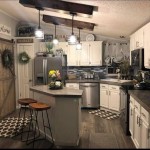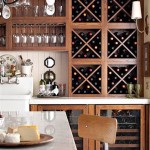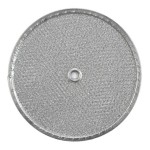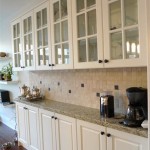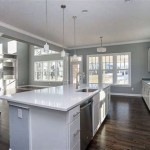Mixing Metals In A Kitchen
Mixing metals in a kitchen is a great way to add visual interest and create a unique look. However, it's important to do it carefully to avoid creating a cluttered or mismatched appearance. Here are a few tips for mixing metals in your kitchen:
Start with a neutral base. This will help to ground the space and prevent it from looking too busy. White, black, or gray are all good options for a neutral base color. You can then add metallic accents in various finishes, such as brushed nickel, polished brass, or copper.
Use different metals in different areas. For example, you could use brushed nickel for the cabinet hardware, polished brass for the faucet, and copper for the light fixtures. This will help to create a sense of balance and prevent any one metal from overwhelming the space.
Use metals with similar undertones. This will help to create a cohesive look. For example, brushed nickel and polished brass both have warm undertones, so they would work well together in a kitchen. Copper and stainless steel, on the other hand, have cool undertones, so they would be a better choice for a kitchen with a more modern aesthetic.
Don't be afraid to experiment. There are no hard and fast rules when it comes to mixing metals in the kitchen. So have fun and experiment with different combinations until you find a look that you love.
Here are a few specific examples of how to mix metals in the kitchen:
Brushed nickel and polished brass: This is a classic combination that works well in both traditional and contemporary kitchens. The warm undertones of the brass will help to add a touch of warmth to the space, while the cool undertones of the nickel will help to keep it from looking too busy.
Copper and stainless steel: This is a more modern combination that is perfect for kitchens with a sleek and sophisticated aesthetic. The copper will add a touch of warmth and personality to the space, while the stainless steel will help to keep it looking clean and polished.
Gold and black: This is a dramatic combination that is perfect for kitchens with a glamorous or Art Deco aesthetic. The gold will add a touch of luxury to the space, while the black will help to ground it and prevent it from looking too over-the-top.
No matter what combination of metals you choose, the key is to use them in moderation and to make sure that they complement each other well. With a little planning and effort, you can create a kitchen that is both stylish and functional.

How To Mix Metals In Your Kitchen Stefana Silber

Q A Mixing Metals In The Kitchen Becki Owens

A Simple Guide To Mixing Metals In The Kitchen Jane At Home

Q A Mixing Metals In The Kitchen Becki Owens

Mixing Metals In Décor Your Kitchen Delta Faucet Inspired Living

5 Compelling Reasons To Mix Metals In The Kitchen

Q A Mixing Metals In The Kitchen Becki Owens
6 Tips For Using Mixed Metals In Your Home Signature Hardware

Best Guide How To Mix Metals In Kitchen Clark Aldine 2024

The Latest Kitchen Trend Mixing Metal Finishes

